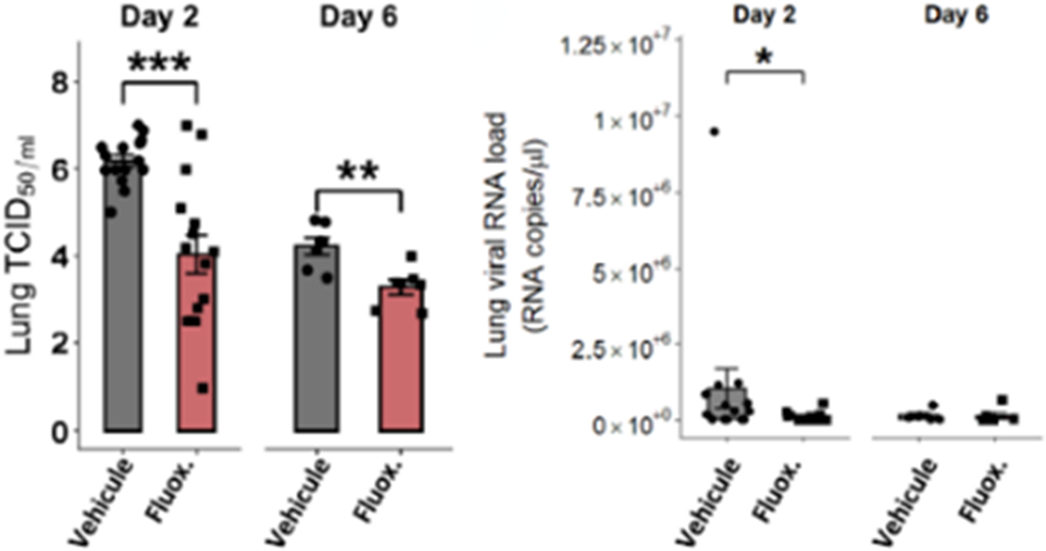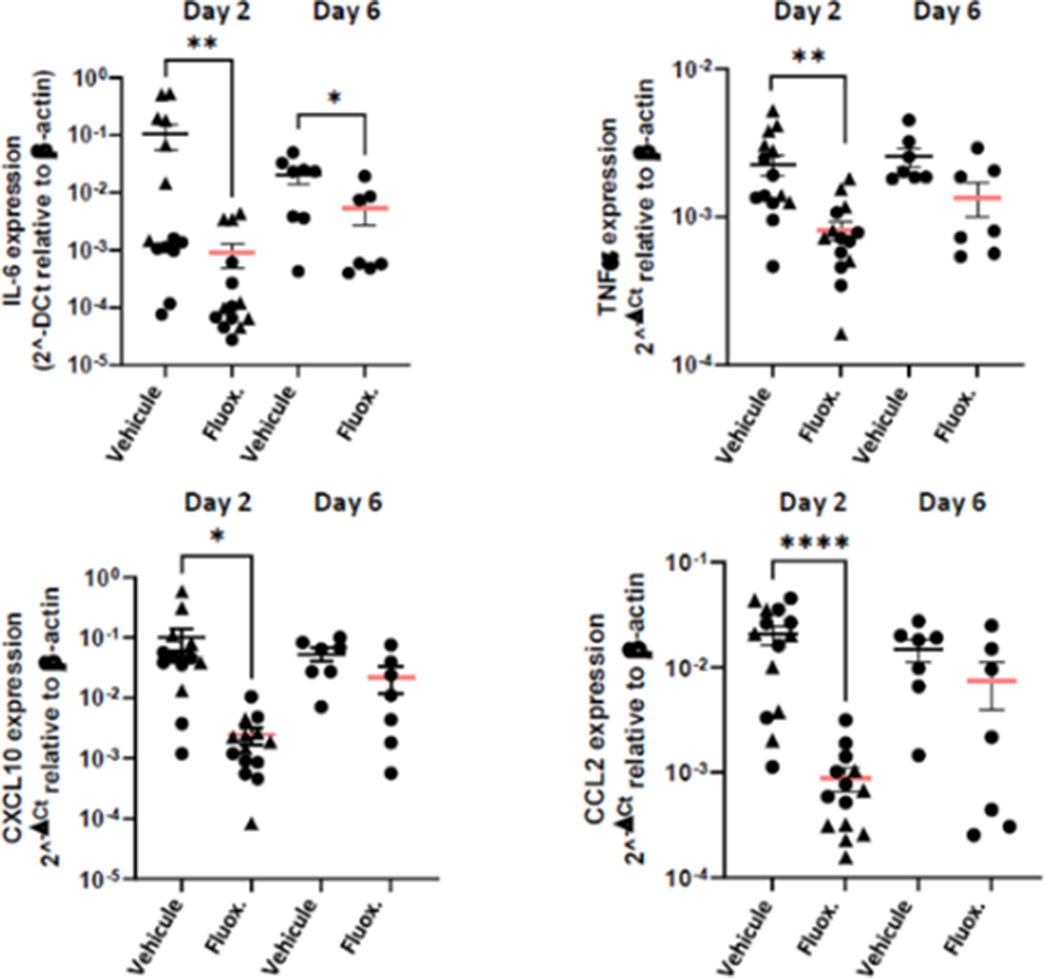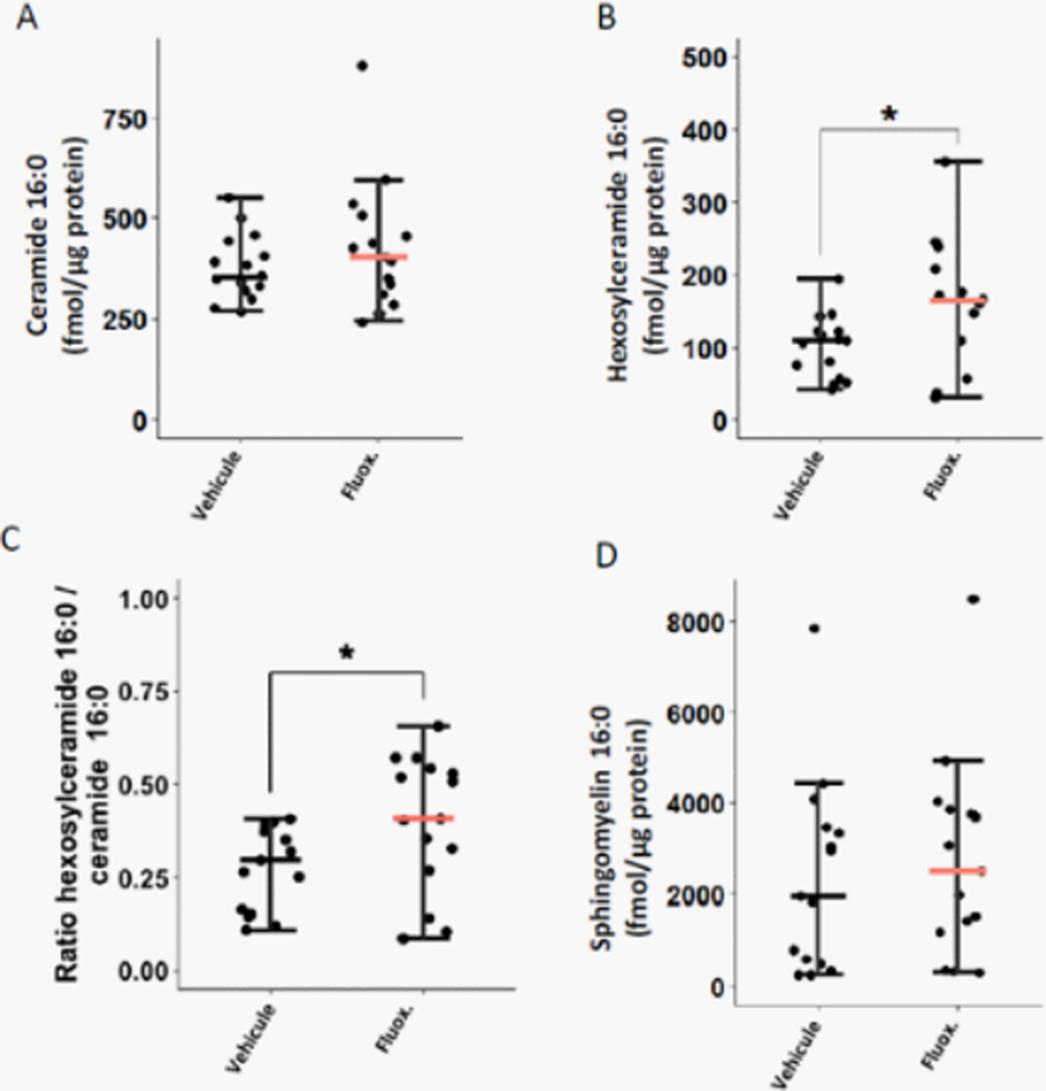42 results
Antiviral and Anti-Inflammatory Activities of Fluoxetine in a SARS-CoV-2 Infection Mouse Model
-
- Journal:
- European Psychiatry / Volume 66 / Issue S1 / March 2023
- Published online by Cambridge University Press:
- 19 July 2023, pp. S119-S120
-
- Article
-
- You have access
- Open access
- Export citation
Understanding the effect of food structures on ileal environment and appetite Regulation
-
- Journal:
- Proceedings of the Nutrition Society / Volume 82 / Issue OCE1 / 2023
- Published online by Cambridge University Press:
- 08 March 2023, E29
-
- Article
-
- You have access
- HTML
- Export citation
P03-68 - Are there effects of the type of antipsychotic medication on the subjective quality of life in patients suffering from schizophrenia?
-
- Journal:
- European Psychiatry / Volume 25 / Issue S1 / 2010
- Published online by Cambridge University Press:
- 17 April 2020, 25-E1178
-
- Article
-
- You have access
- Export citation
PW01-186 - Effects Of Longterm Treatment With Atypical Neuroleptics For Patients With Schizophrenia (Elan): Medication Use, Adherence, Functional Impairment, Quality Of Life
-
- Journal:
- European Psychiatry / Volume 25 / Issue S1 / 2010
- Published online by Cambridge University Press:
- 17 April 2020, 25-E1593
-
- Article
-
- You have access
- Export citation
S02.02 Epsilon study of schizophrenia: Outcome measures, care and service costs
-
- Journal:
- European Psychiatry / Volume 15 / Issue S2 / October 2000
- Published online by Cambridge University Press:
- 16 April 2020, p. 215s
-
- Article
-
- You have access
- Export citation
EPA guidance on how to improve the image of psychiatry and of the psychiatrist
- Part of
-
- Journal:
- European Psychiatry / Volume 30 / Issue 3 / March 2015
- Published online by Cambridge University Press:
- 16 April 2020, pp. 423-430
-
- Article
- Export citation
P02.360 Differences in echogenicity of substantia nigra in patients with different subtypes of the schizophrenic spectrum
-
- Journal:
- European Psychiatry / Volume 15 / Issue S2 / October 2000
- Published online by Cambridge University Press:
- 16 April 2020, pp. 419s-420s
-
- Article
-
- You have access
- Export citation
ECP09-01 - European federation of psychiatric trainees: Visions for the future
-
- Journal:
- European Psychiatry / Volume 26 / Issue S2 / March 2011
- Published online by Cambridge University Press:
- 16 April 2020, p. 1805
-
- Article
-
- You have access
- Export citation
ECP09-03 - Information technologies in psychiatry
-
- Journal:
- European Psychiatry / Volume 26 / Issue S2 / March 2011
- Published online by Cambridge University Press:
- 16 April 2020, p. 1807
-
- Article
-
- You have access
- Export citation
A Multi-Centre Pragmatic Trial of Antipsychotic Drug Treatment
-
- Journal:
- European Psychiatry / Volume 26 / Issue S2 / March 2011
- Published online by Cambridge University Press:
- 16 April 2020, p. 2203
-
- Article
-
- You have access
- Export citation
Social Networks, Service Utilisation and Service Costs in South London
-
- Journal:
- European Psychiatry / Volume 11 / Issue S4 / 1996
- Published online by Cambridge University Press:
- 16 April 2020, p. 263s
-
- Article
-
- You have access
- Export citation
ECP09-02 - Psychiatry training in europe: Implementation and evaluation of training programs
-
- Journal:
- European Psychiatry / Volume 26 / Issue S2 / March 2011
- Published online by Cambridge University Press:
- 16 April 2020, p. 1806
-
- Article
-
- You have access
- Export citation
ECP01-01 - European Federation of Psychiatric Trainees Research Activities: an International Psychiatric Trainees Research Network
-
- Journal:
- European Psychiatry / Volume 27 / Issue S1 / 2012
- Published online by Cambridge University Press:
- 15 April 2020, p. 1
-
- Article
-
- You have access
- Export citation
The emergence of vampire bat rabies in Uruguay within a historical context
-
- Journal:
- Epidemiology & Infection / Volume 147 / 2019
- Published online by Cambridge University Press:
- 22 April 2019, e180
-
- Article
-
- You have access
- Open access
- HTML
- Export citation
Does the impact of a plant-based diet during pregnancy on birthweight differ by ethnicity?
-
- Journal:
- Proceedings of the Nutrition Society / Volume 77 / Issue OCE4 / 2018
- Published online by Cambridge University Press:
- 05 October 2018, E130
-
- Article
-
- You have access
- HTML
- Export citation
Novel hemotropic mycoplasmas are widespread and genetically diverse in vampire bats
-
- Journal:
- Epidemiology & Infection / Volume 145 / Issue 15 / November 2017
- Published online by Cambridge University Press:
- 24 October 2017, pp. 3154-3167
-
- Article
-
- You have access
- HTML
- Export citation
Evaluation of CryoSat-2 derived sea-ice freeboard over fast ice in McMurdo Sound, Antarctica
-
- Journal:
- Journal of Glaciology / Volume 61 / Issue 226 / 2015
- Published online by Cambridge University Press:
- 10 July 2017, pp. 285-300
-
- Article
-
- You have access
- HTML
- Export citation
Weed Control and Economic Returns with Postemergence Herbicides in Narrow-Row Soybeans (Glycine max)
-
- Journal:
- Weed Technology / Volume 11 / Issue 3 / September 1997
- Published online by Cambridge University Press:
- 12 June 2017, pp. 453-459
-
- Article
- Export citation
Mental health training for secondary school teachers in Haiti: a mixed methods, prospective, formative research study of feasibility, acceptability, and effectiveness in knowledge acquisition
-
- Journal:
- Global Mental Health / Volume 4 / 2017
- Published online by Cambridge University Press:
- 06 March 2017, e4
-
- Article
-
- You have access
- Open access
- HTML
- Export citation






